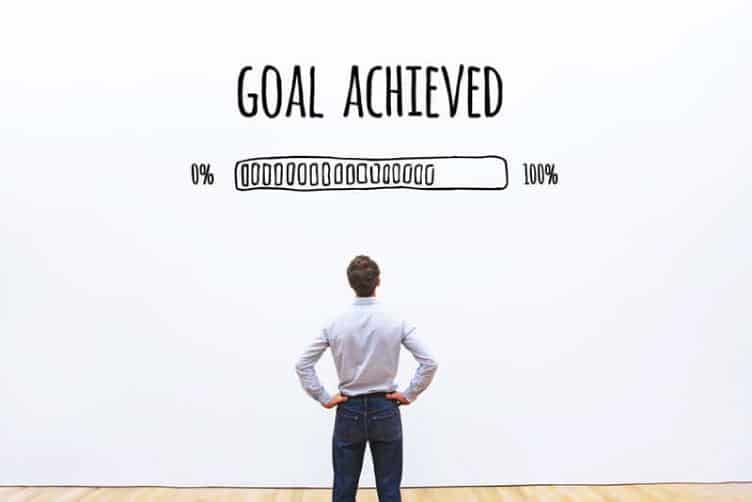How to Hypnotize Someone With Your Eyes Without Them Knowing
Do you want to learn how to hypnotize someone in just five easy steps? If so, you are in the right place. Hypnosis is a very common state of mind. Each of us uses or is exposed to some form of hypnosis every day, whether we realize it or not. We are constantly hypnotized by marketing and advertising, television and even movies. The subconscious mind acts like a giant sponge, absorbing everything around it. When you learn how to hypnotize someone and access their subconscious by inducing a hypnotic state, you can input suggestions that can positively change their lives. For example, once you know how, hypnosis can be used to help someone lose weight, stop smoking, or rebuild low self-esteem and confidence. In this article, you will learn: Let's begin... Generally, hypnosis is a trance-like state, characterized by intense suggestibility, heightened imagination, and mental clarity and regulation. The trance-like state of hypnosis is similar to daydreaming, or that feeling you get when you are lost in your thoughts or totally absorbed in something you love. For example, every time you get engrossed in a movie or stare blankly out the window. You can tune out most, if not all, of the stimuli around you. Hypnosis allows you to tap into the alpha brainwave state, which occurs when your brain waves slow down. The alpha frequency range bridges the gap between the conscious thinking mind and the subconscious mind. It helps you calm down and brings you into a state of deep relaxation. That is why many people use hypnosis to manage and decrease stress. Hypnosis is a process that utilizes the powerful subconscious mind and the mind-body connection. It is an altered state of consciousness in which one has an increased focus and awareness. When you immerse yourself in hypnosis, the world of imagination becomes quite real. The only limitations you have are within your own mind. If you choose to break free from your habitual patterns under hypnosis, you will be able to bring those changes into your everyday life. New neural pathways in the brain are created through changes in behavior, environment, and processes such as hypnosis. The adaptive brain is malleable like plastic, and it is designed for learning. When you undergo hypnosis, you are essentially rewiring those neural pathways. As you relax into a hypnotic state, your mind becomes suggestible, and you are then able to get to the root cause of issues and rewrite the stories you created around certain events in your past. By practicing hypnosis, you train your mind to let go of negative thoughts. The more you train your mind to focus on the present and positive, the happier and more peaceful you will be. When you are able to change your mind, you will be able to change your life as well, because both have a simultaneous impact on each other. Hypnosis can transform your life whether you are a professional hypnotherapist or a client. As a professional, you can learn hypnosis and help change people's lives. As a client, you can use hypnosis to steer your mind in a more positive direction, so you can make the changes you desire. You can also incorporate hypnosis into other practices if you happen to be a therapist, coach or mentor. Learning the skills and techniques of hypnosis is a great way to expand your toolkit, in whatever you do. As you can see, there are many benefits to hypnosis, whether you are a client or a practitioner using it every day. Those who engage in a regular hypnosis program can better manage anxiety and stress and live a healthier life. Hypnosis helps you do everything better, and that's really the beauty of it. Hypnosis is by far one of the easiest ways there is to make lasting changes. In order to understand how hypnosis can serve you, it is important to stop and ask yourself why you want to hypnotize someone and what your motivation is. Do you want to learn some helpful techniques for you and your friends? Do you want to learn new skills you can use as part of your current role or job? Or do you want powerful self-development tools you can use in all areas of your life? Whether you want to learn hypnosis to incorporate it into your own self-improvement program or learn how to become a full-time practitioner, the same principles apply: Hypnosis is not mind-control and it doesn't involve manipulating someone. Guided imagery, which is a form of trance, is used all of the time in the health care system to help patients visualize themselves healing and hypnosis is very similar. The hypnosis practitioner serves as a guide and a teacher of sorts, helping you become more comfortable with the process of hypnosis. Ultimately, the only one that can "hypnotize" you, is YOU. Hypnosis is very safe because you are always in control. It isn't like stage hypnosis where people bark like a dog or cluck like a chicken. Don't worry, professional hypnotherapy is a powerful health and wellbeing intervention, which would never make you do anything that goes against your morals or values. Hypnosis provides improved clarity, focus, and concentration and empowers you to be in control of your mind, rather than your mind controlling you. Hypnosis is a very gentle process. Using hypnosis, you can literally train your mind to focus on whatever it is you want to create. There are many methods when it comes to hypnotizing people. Some hypnotherapists might be more comfortable working with some type of written script as a guide or starting point, while others may not use a script at all. You can learn how to hypnotize someone by using the 5 simple steps below. The first part of a session, also known as the pre-amble, should focus on building rapport. This is the part of the script or session that provides the background or context for the work. It may involve asking questions to really understand what the client is hoping to achieve. It is also useful to gain insights into the words and phrases they use, so you can use their language during the session. Marisa Peer, who is known as the "therapist's therapist" because she teaches some of the most effective forms of hypnotherapy, refers to this as "setting the client up for success." If the session were based around overcoming obstacles, for example, this part might delve deeper into the obstacle one is trying to overcome, or the reason they are trying to overcome it. It is also important to build rapport before the actual session begins. Taking a few moments to sit down with someone and go over their history or issue can help you get more comfortable with them, which will help you during the hypnotic induction. Hypnotizing someone is really just getting into a relaxed state of increased focus and concentration, without any other distractions taking over the mind. This stage is all about absorbing someone's attention and inducing trance. You can do this in many ways, but the best place to start is by simply asking them if they would like to do hypnosis. This is about simply asking permission. Once they agree to do hypnosis, you can begin the process. Founder of a pioneering therapeutic method called Rapid Transformational Therapy®, Marisa Peer recommends using a Rapid Eye Movement (R.E.M) technique to help clients enter hypnotic state much quicker than with traditional approaches. Marisa's technique involves asking the client to close their eyes and roll their eyes up for a few moments. Once they close their eyelids over the eyes, you will notice their eyes start flickering under the eyelids. This will help your client relax and enter a trance state similar to the Rapid Eye Movement (R.E.M) stage of sleep, characterized by vivid dreams associated with increased brain activity. From this point forward, you then focus on deepening the trance. Bypassing someone's critical mental chatter is important to get someone's attention, then you can continue deepening the trance. There are hundreds, if not thousands, of inductions and deepeners you can use. It is always a good idea to have a good selection on hand, in case one method doesn't seem to be working. There are many ways to do this. One way is to simply repeat relaxing phrases like "you are now going deeper and deeper into this beautiful soothing relaxation" or "every sound that you hear causes you to go deeper and deeper into this calm state of relaxation." This part of the script needs to be read in a smooth, melodic voice. It needs to be read very slowly in order to relax someone. You don't want to rush this part of the process. The overall goal is to slowly and gently relax someone to the point that they drift off into a totally relaxed state. Your voice should have cadence and rhythm as well since you are trying to lull someone into a hypnotic trance through using hypnotic induction and a deepener. The deepener may not always be necessary, but it is a good tip to have a deepener ready in case your client is not yet fully relaxed. A deepener is simply a tool that helps deepen the relaxation. At this stage, it's important that you learn the subtle signs when someone is in trance. There are many signs of trance, and you may not see them all, so be sure to look for these cues in your subjects: As you can see, many of these are very subtle signs, so you have to be cognizant of that. Sometimes people think they haven't been hypnotized when they have. As a subject or client, you may hear everything the hypnotist is saying. You may also zone out and not hear anything. There are no hard and fast rules because everyone reacts differently. The real skill of the professional begins next - the part of the process that focuses on the issue at hand. This is where you may use hypnotic imagery or metaphors. You can also use direct suggestions or hypnotic stories in this part of the session to 'excite the imagination' as Marisa Peer says. She says that "Your imagination is the most powerful tool you own" and knowing how to use it with hypnosis is very powerful. This step is all about stimulating the subconscious mind to uncover any unconscious blocks or limiting beliefs. This is also called the "suggestion phase". What you say at this point obviously depends on what the issue is. Let's say you are working on confidence. You could tell a story where someone pictures themselves feeling confident. You could also offer some simple suggestions such as "You are a beautifully confident person" or "Your confidence flows from within." Hypnotic imagery can be as simple as imagining yourself jumping over obstacles or as complex as using some kind of hypnotic story. Hypnosis scripts are similar to sales pitches in many aspects. Repetition is essential as this is how the mind learns, as it strengthens the neural pathways. What you are really doing is telling them what you are going to tell them, telling them, and then telling them what you have just told them! After the main portion of the script, you can then focus on the future desired state. Ask your client to imagine or picture that end result or goal. Tell them to visualize themselves achieving it. During this portion of the work, you help someone visualize themselves a few months down the road, having already made the changes they want to make. You can do this in a number of ways from having someone stand in the winner's circle to allowing them to picture themselves at their perfect size and shape. Helping someone envision that future state can really help them see themselves succeeding. This can lead the subconscious mind to the desired outcome. Last but certainly not least, you need to embed the suggestions. You can do this in a number of ways. Repeat positive suggestions such as "Your mind is focused and clear". You can also say "These suggestions are now permanently embedded into your subconscious mind, where they will grow stronger and stronger over the next few days and weeks." That concludes the five steps to hypnotizing someone. It is time to gently bring your client back. When it is time to finish your session, you must ensure you do not pull your client, or yourself, back into an awake state too quickly. Do this slowly and gradually. Begin by slowly making your client aware of their surroundings, with use of verbal cues. Let them know that they are regaining full consciousness. You can do this with phrases such as 'I am going to count to five, and when I reach five, you will be fully awake again.' If you can, and your client is willing, discuss with them how they felt during the session, as their feedback will allow you to improve and provide a better experience next time. Ask them how they felt whilst they were hypnotized, if they felt any pulls back to an awake state that you were not aware of, and what they experienced during the session As you can see, there is much more to hypnosis than meets the eye. You can achieve so much when you master hypnosis. Even more, by using modern therapeutic approaches such as Rapid Transformational Therapy® (RTT®). RTT® is a revolutionary method known to deliver lasting results, often in just one to three sessions and created by world-renowned therapist Marisa Peer. Based on Marisa's three-decade-long career researching, testing, and documenting the techniques that really work, RTT® is fast becoming recognized as one of the most effective therapies available. It is endorsed by the General Hypnotherapy Register, the Complementary and Natural Healthcare Council, the National and International Council of Psychotherapists, the American Board of Hypnotherapy, the International Association of Complementary Therapists, as well as the International Institute of Complementary Therapies. You don't need any previous experience to consider a new career in hypnotherapy - only a willingness to learn and a desire to help others. Not only will you become a certified hypnotherapist, but you will also become a certified RTT® therapist, empowered with the proven techniques to deliver profound and lasting change for your clients. As part of the training course, Marisa Peer is also offering live training elements, where you get the chance to meet her in person and practice your skills with the help of her expert training team. This hypnotherapy training is available at a variety of locations, including London, Florida, and California. Interested in finding out more? You can download a FREE RTT® Brochure, or click the banner below to find out how to begin your journey towards a fulfilling and rewarding career, with an in-depth webinar featuring Marisa Peer herself.
What Is Hypnosis?

How does hypnosis work?
How Can Hypnosis Change Your Life?
With hypnosis you can:
Why Would You Want to Hypnotize Someone?


5 Steps To Hypnotize Someone
Step 1: Building Rapport and 'Setting The Client Up For Success'
Step 2: Hypnotic Induction and Deepener

How to deepen the trance
Recap of Hypnotic Induction
How to tell if your client is under hypnosis
Step 3: Hypnotic Imagery

Step 4: Future State

Step 5: Embedding the Suggestions

Ending a Hypnosis Session
Conclusion
What is Rapid Transformational Therapy® (RTT®) ?

How to Hypnotize Someone With Your Eyes Without Them Knowing
Source: https://rtt.com/how-to-hypnotize-someone/
0 Response to "How to Hypnotize Someone With Your Eyes Without Them Knowing"
Post a Comment